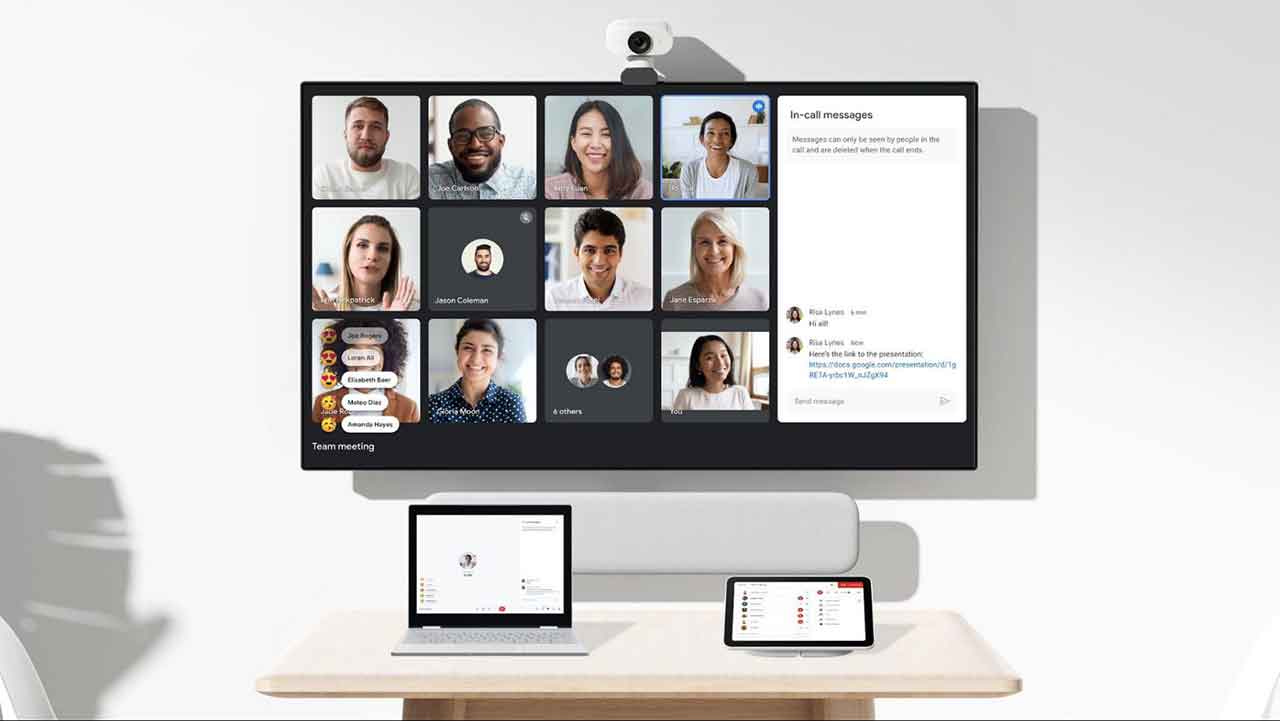The five Google Workspace business productivity apps you need.

Curious about Google Workspace, formerly known as G Suite, and how to use Google apps in your business? Use this essential guide to Google Workspace to learn what’s included, pricing and the most important products.
What is Google Workspace?
Launched in 2006 as Google Apps for Your Domain, Google Workspace is a set of apps and tools offered by Google to business users. The offering was rebranded as G Suite in 2016 and was rebranded yet again as Google Workspace in October 2020. As of March 2021, there are 15 apps, including Calendar, Chat, Docs, Gmail, Meet, Sheets, Slides and Cloud Search. In addition, Google Workspace has security and administration tools.
Google Workspace pricing is available in multiple plans with different features and pricing.
- Business Starter. This plan is priced at $6 per user per month. It includes 30 GB of cloud storage per user and a maximum of 100 participants in a video meeting.
- Business Standard. This Google Workspace plan is priced at $12 per user per month. It includes 2 TB (i.e., 2,000 GB) of cloud storage per user. Further, the plan lets you run video meetings with 150 participants and record video meetings. The Business Standard plan also includes standard customer support.
- Business Plus. With a price of $18 per user per month, the Business Plus plan provides enhanced security controls. Further, this plan also includes 5 TB of cloud storage per user. With this plan, you can run a video meeting with up to 250 participants and attendance tracking.
- Enterprise. This Google Workspace plan offers custom pricing and storage. Contact Google directly to discuss this option if the other plans are not a good fit for your company.
The top five Google products for business.
As a suite of related Google products, there are many ways to use Google Workspace. To keep life simple, let’s focus on the five products that might be most useful for your small business. We choose these Google products because they are some of the best-known apps.
Gmail.
There are more than one billion Gmail accounts, making it one of the world’s most popular email services. However, there is one downside to using a standard Gmail email address for business: branding. If you sign up for a free Gmail email address rather than Google Workspace, your email address would look something like Company@gmail.com. Google Workspace lets you use your company domain name (e.g., company.com) in your email address and keep all the features of Gmail.
With Google Workspace email, you can:
- Find messages easily. Effortlessly search for emails using the same functionality available in Gmail.
- Automatically tag emails. Make messages easy to find by applying automatic tags (e.g., apply the tag “receipts” to messages containing business expenses.
- Customize email signatures: Include your name, job title, email address, business phone number, and other key details at the bottom of every message.
- Store emails. The Business Starter plan includes 30 GB of cloud storage per user for all Google Workspace apps. If you used the storage exclusively for email and each email included a 1 MB attachment, you could store approximately 30,000 emails.
Improve coordination with Google Calendar.
Ever struggle to schedule a business conference call with coworkers? In that case, Google Calendar could be a good solution. You can use it to check availability for other people in your organization and set up appointments and reminders. A few of the product’s key business features include:
- Group calendar. You can create a calendar to share with your team or everyone in your company. For instance, you might create a department group and share a calendar with its recurring meetings.
- Event reminders. Worried about missing meetings? Google Calendar provides event reminders 10 minutes before an event by default.
- View your Google Calendar on multiple devices. You can use Google Calendar on the web on a computer, through an app on your phone or tablet, or even integrate it with a calendar app of your choice (like Apple Calendar or Outlook).
Create documents with Google Docs.
If you have been looking for an alternative to Microsoft Word, Google Docs is a good choice for live collaboration. Notable features of Google Docs for business users include:
- Works with multiple file types. Google Docs lets you import PDF files and Microsoft Word files. When you’re done, you can export the files as a PDF, DOCX, ODT, TXT or HTML as needed. If a customer or vendor only wants to receive PDF files, you can easily export Google Docs files in that format.
- Sharing controls. Some documents might be commercially sensitive, like a business proposal with pricing details. Google Docs lets you control who has access to each document. You can decide to give a user different privileges: edit, view or add comments.
- Work offline. If you use the Google Chrome browser, you can work on your Google Docs files offline (i.e., without an internet connection). Once you reconnect to the internet, your data will be backed up to Google.
Google Sheets: The Google answer to Excel.
Whether you want to keep track of business expenses, customers or something else, a spreadsheet is a helpful business tool. Google Sheets gives you the ability to track numbers, calculate numbers with formulas, and more. Google Sheets also allows for real-time collaboration (e.g., holding a business budget discussion with a coworker).
Useful Google Sheets features include:
- Shortcuts. You can create your personalized shortcuts by recording a macro (e.g., set Row 1 color to yellow). In addition, there are built-in keyboard shortcuts like Ctrl-Shift-3 (format as date) and Ctrl-Shift-4 (format as currency).
- Data importation from any public webpage. Using the ImportXML feature, you can automatically download data from any public website. That can save you time if you frequently have to check websites for new data.
- Google Sheets Explore function. This data analysis tool lets you get answers by typing in simple questions like, “What were the total sales in September?”
- Spreadsheet sharing. You can share a spreadsheet with anybody else who has a Google account. You can generate a URL for the spreadsheet and then email the URL to another person. There’s no need to email an attachment.
Create presentations with Google Slides.
Google Slides is an alternative to Microsoft PowerPoint. The presentation app allows for collaboration, so give the app a close look if you like to build presentations with colleagues. For added productivity, use a video conference tool with screen-sharing – such as Ooma Meetings — to discuss the presentation.
According to G2, a business software review website, Google Slides’s best features include:
- Templates. The product comes with a variety of templates, and you can also create your company templates.
- Placement of photos and videos. Some users commented that they liked the ability to insert photos and videos directly into presentations.
- Compatibility with Microsoft PowerPoint. Other users like the ability to import Microsoft PowerPoint files. If your company already has PowerPoint files, this feature could be quite helpful.
Where to find out more about Google Workspace features.
This essential guide to Google Workspace has focused on some of the most popular tools and features. To find out more, check out the Google Workspace website.

Learn more about how Ooma Office can help your business.
Thank you!
An Ooma Office Sales Representative will be in touch shortly.
866-573-0707


Learn more about how Ooma Office can help your business.
Just call 877-621-0515 or click this to CHAT. Or, fill out this form and someone will reach out to you shortly.



